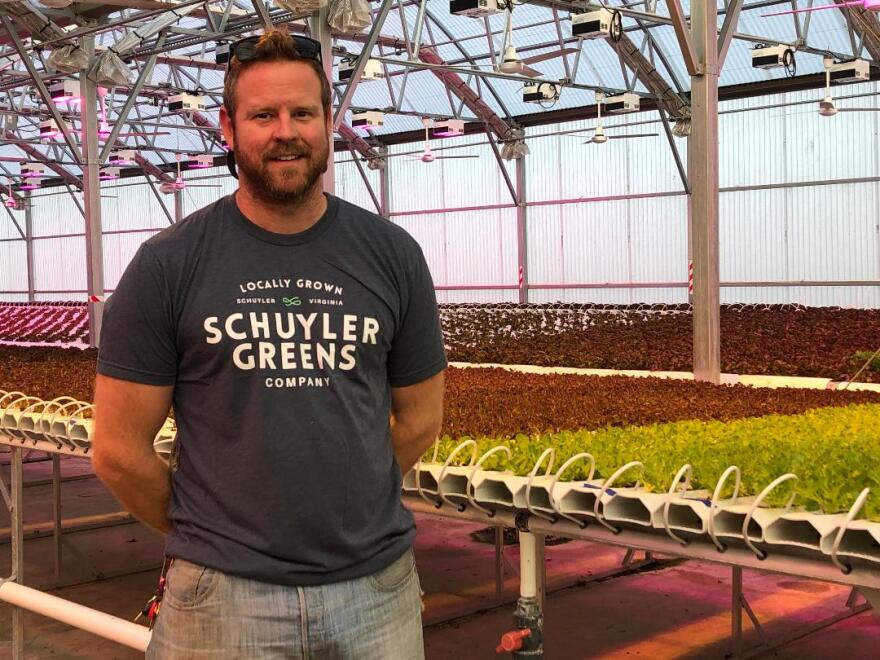Farming is Virginia’s top industry – generating $70 billion a year and providing jobs for 334,000 people. Winter used to be a quiet time for farmers in the Commonwealth, but more of them are now growing crops inside, year round.
When John McMahon left his job in corporate sales to grow leafy greens in rural Virginia, he was going back to his roots. He’d grown up on a farm and missed life on the land.
“My dad took me out of first grade to plow a field to plant corn, and it was the happiest day of my life, and it’s pretty funny how now – 30 years later – I’m back farming. I fought the universe, but it pulled me back.”
But his farm is very different from his father’s. Located south of Charlottesville, Schuyler Greens is a giant greenhouse where crops grow on rafts atop 35,000 gallons of water and nutrients, floating about 50 yards from planting to harvest.
“Our time horizon from seedling to harvest is about 21 days,” he says.

McMahon is on the cutting edge of an indoor food crop industry that is likely to grow according to Elaine Lidholm at the Virginia Department of Agriculture.
“We’ve got to start growing differently because of climate change with floods or the droughts or the unseasonable weather. One nice thing about growing under glass or even plastic is that it’s sort of weather proof.”
And, she adds, we’re running out of places to grow food. “By the year 2050 we’re going to have to feed ten billion people on this earth, and there is not enough unused, arable land on the planet to accomplish that.”
John McMahon notes greenhouse farming eliminates the need for pesticides and herbicides while reducing demand for another limited resource. “We use about 40 times less water per head,” he explains.

This approach minimizes shipping costs and pollution generated by trucks and trains that bring greens from California, and Lidholm says it cuts other expenses borne by traditional farmers.
“They don’t have to have the big tractors and spray rigs and all of that equipment," she says. "It’s much less labor intensive. If they grow in a column up a trellis or something like that, one person can handle the job that probably several did before.”
Of course there are still expenses – like the high tech system McMahon purchased from Europe – a leader in greenhouse cultivation. His electric bill can easily run $2,000 a month for supplemental lighting on short winter days.
In the end, however, McMahon says consumers get a better product for less – greens that are more flavorful, colorful, fresher and more nutritious than California produce that may take ten days to go from the field to the packer to the distributor to the store.

“Because guys like us are growing it so much closer to the market, generally when you get our product it’s within 12 hours of harvest. Sometimes we’re finishing right before it goes to the store. Historically, a lot of the vegetable seeds were bred for California growers, so they ship better. Breeders now, since there are more greenhouses like us, are more focused on flavor, texture, color.”
Virginia can’t say how much of our food is now grown by greenhouses, but this year the USDA is taking the first step to find out – adding crops grown under glass to the survey of farmers it does every five years. Already it seems likely we’ll see an increase after a New Jersey company announced it would build a $42 million facility to produce greens near Danville.




